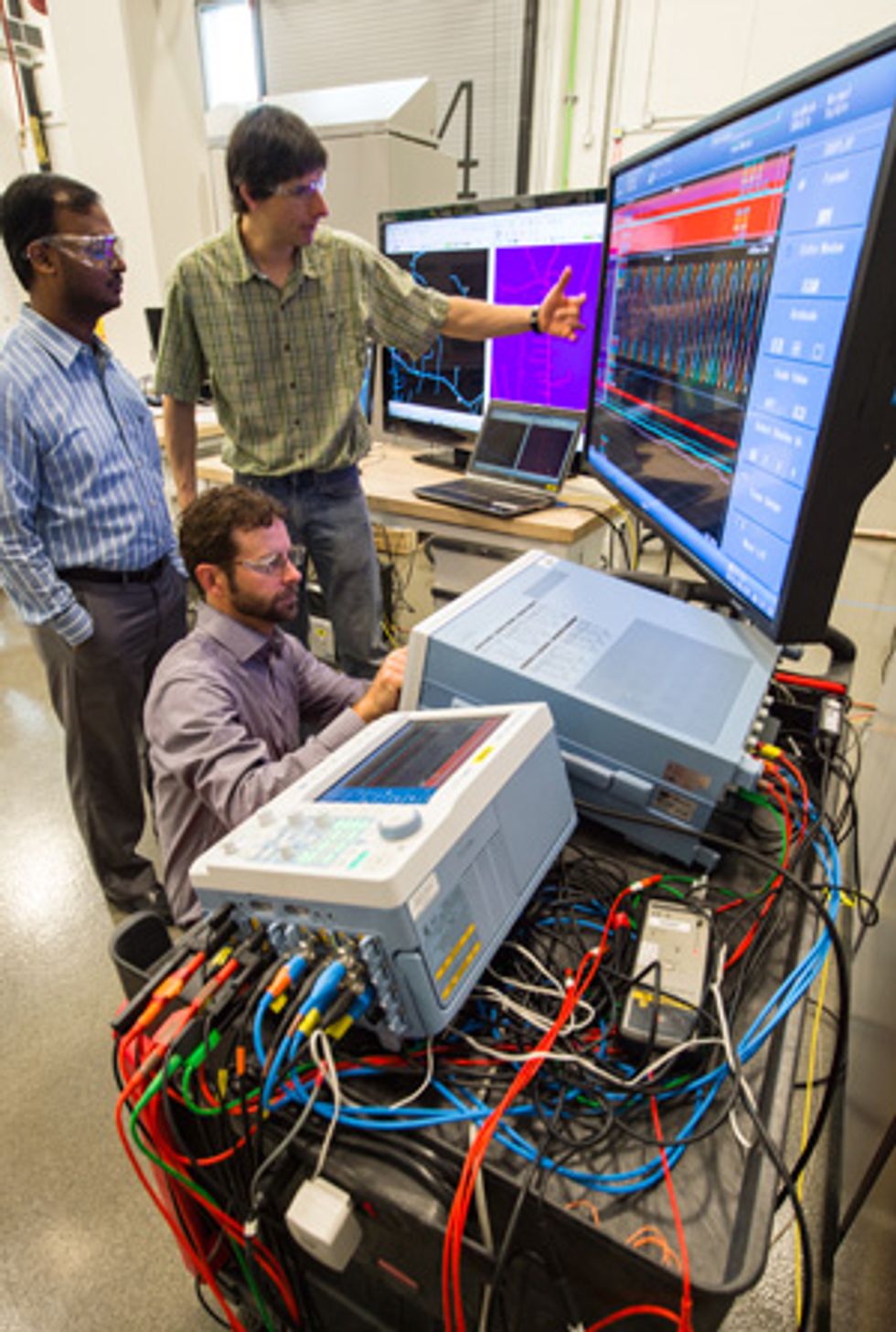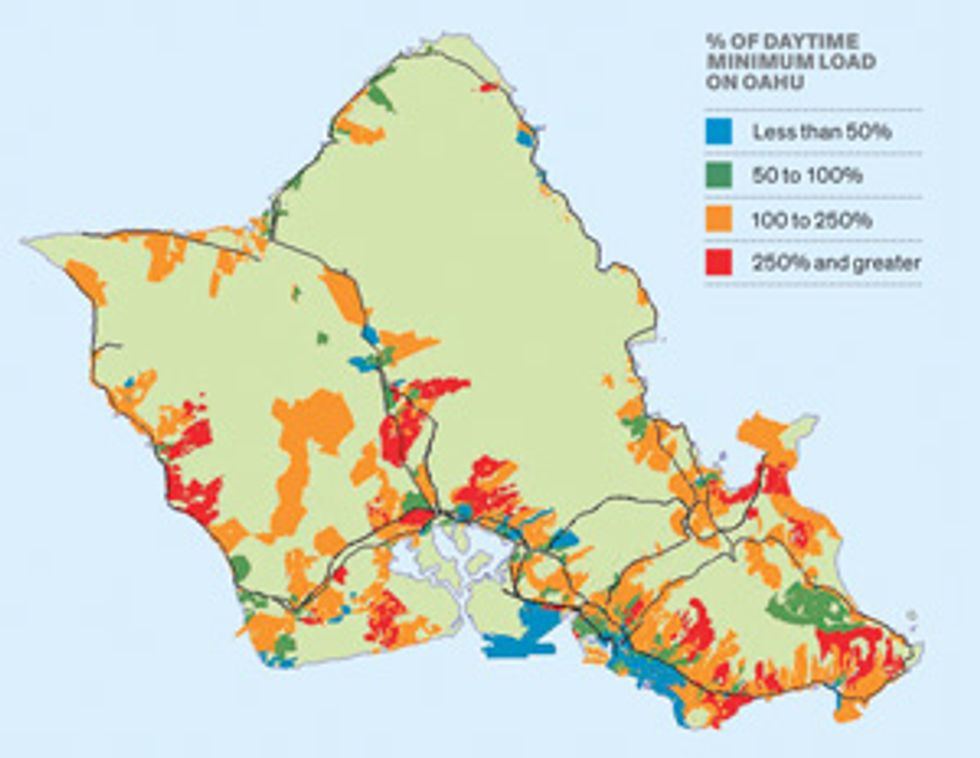Can Smarter Solar Inverters Save the Grid?
A new technique called virtual oscillator control lets solar inverters help stabilize the power grid
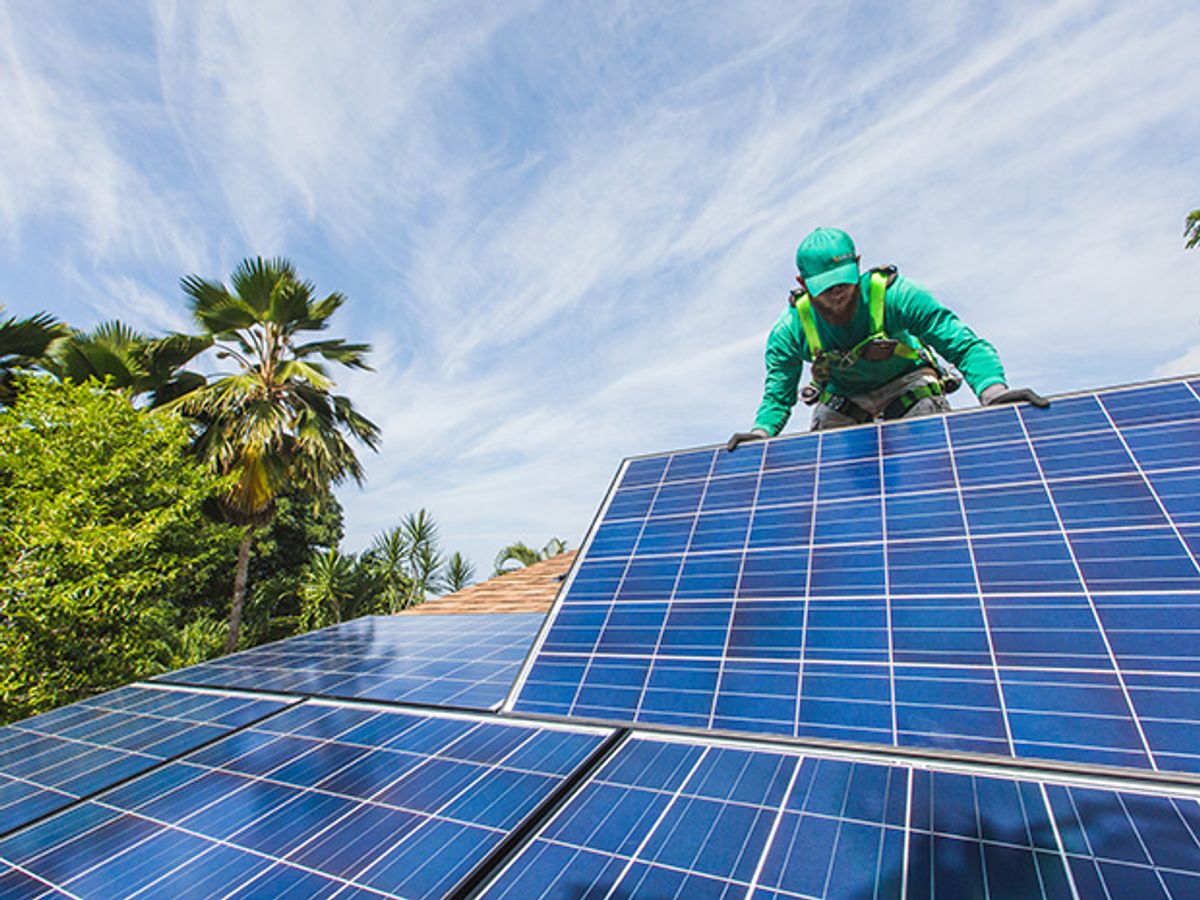
When Steve Johnson had solar panels installed on the roof of his Boulder, Colo., home several years ago, he considered it his personal contribution to making the world a little cleaner. And if his grid-connected photovoltaic (PV) system would occasionally cause his electricity meter to spin backward during the day and trim his utility bills, so much the better.
It was only later, during a tour of the National Renewable Energy Laboratory (NREL), in nearby Golden, that he learned about solar’s potential downside: Most PV systems are set up to disconnect from the grid whenever they detect a significant fault. If a single home’s PV system trips off-line, it’s only a headache for the owner. But if hundreds or thousands of them do so simultaneously, it could upset the network’s delicate balance, turning an otherwise small disturbance into an outage blacking out an entire city or county.
Throughout much of the developed world, electric utilities are facing an unprecedented challenge. Growing numbers of customers are installing solar PV systems on their homes or businesses. In the United States alone, the installation of PV systems has seen a compound annual growth rate of nearly 60 percent since 2010, resulting in an installed capacity of 32 gigawatts. The power they’re injecting into distribution lines is causing voltage- and frequency-control problems that threaten to destabilize the grid. While this is not yet a major problem, it could become one as distributed solar systems proliferate.
The cause of the problem is the inverter, an electronic system that converts the direct current (DC) supplied by the PV panels into the alternating current (AC) that flows on the power grid. The vast majority of inverters sold to homes and businesses today, including the one on Johnson’s house in Boulder, are “dumb” inverters. Although they supply AC at the right voltage and frequency to sync with the distribution grid, they are otherwise passive. They can’t sense what is happening on the grid and adjust themselves accordingly.
But newer “smart” inverters can prevent a PV system from going off-line when it doesn’t have to. By doing so, they can actually make the grid more stable, by preventing the sudden deterioration of voltage and frequency that would otherwise occur when hundreds or thousands of PV panels are suddenly taken off-line, according to recent research by NREL and its partners. My colleagues at NREL have also been developing an innovative method for controlling inverters that will keep the grid stable even when all of the power is coming from solar, wind, and other forms of generation that connect to the grid via an inverter.
Smart inverters are poised to fill a big need in the fast-evolving electric-utility industry. As more and more homeowners put PV panels on their roofs, the power they are supplying is reducing the need for big, centralized generating plants. The upshot is that increasing numbers of these traditional power plants are getting retired, and grid operators are scrambling for ways to keep their networks running with the same high level of reliability that their customers have long taken for granted. The combination of smart inverters and new control methods will be essential to helping utilities transition to the grid of the future, in which vast amounts of wind- and solar-generated electricity will be the norm.
Consider what can happen on a sunny day at noon when a coal-fired plant unexpectedly goes off-line or a transmission line suddenly goes down. The loss might cause the grid voltage to dip by up to 10 percent. To restore the voltage to normal, technicians must bring additional generation on line quickly—through, for instance, backup “spinning reserve” capacity that a utility maintains for just such a situation. Or they could curtail demand, perhaps through an automated mechanism known as demand response, which enlists customers to reduce their electricity consumption when power prices are high or when grid reliability is threatened.
What you don’t want to happen in a situation like this is to lose even more generators—and yet that is exactly what does happen when a host of dumb inverters switches off en masse. Left unchecked, what starts as a minor voltage drop can cascade into a widespread fiasco.
To be sure, there’s a good reason for inverters to disconnect when the grid is down: You wouldn’t want PV systems to inadvertently energize a downed power line because that line could shock anyone who touched it. But in the first few seconds of a fault, it’s critical to maintain PV generation in sections of the grid that have not been damaged.
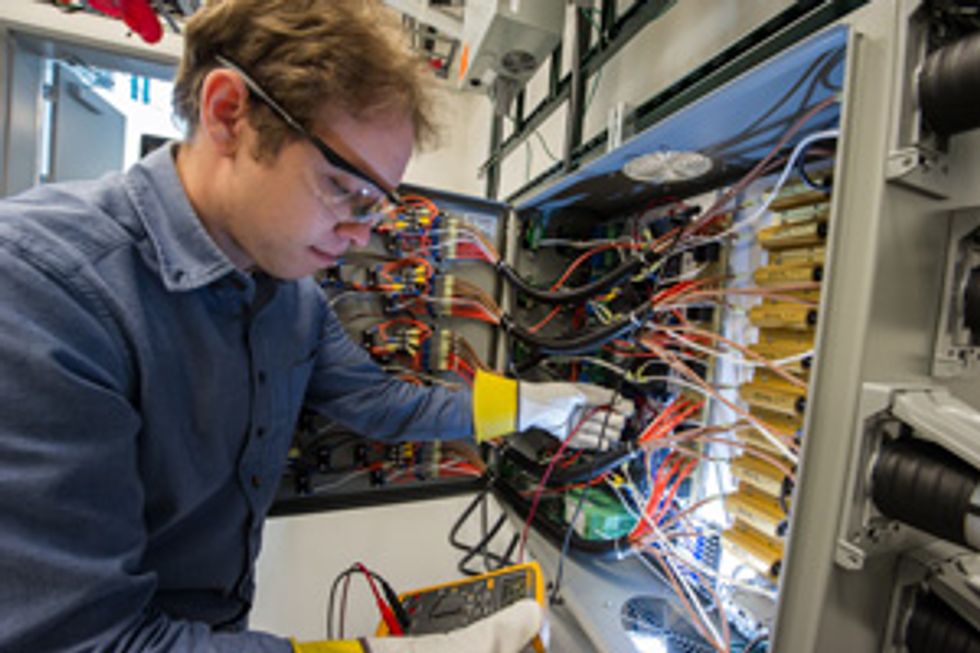
In contrast to dumb inverters, a smart inverter can “ride through” voltage or frequency dips and other short-term grid disturbances. And if these inverters have communications capabilities, they can let grid operators monitor and control them in response to changing conditions.
To understand the effects of smart solar inverters on utility systems, there’s no better place to study them than Hawaii. The state has the highest electricity rates in the United States, which, along with incentives from the utility, has given residents and businesses powerful motivation to install their own PV systems. The state now has about 20 times as many solar installations connected to its grid as the average mainland state does, and that trend is likely to continue. Last year the Hawaiian government set a goal to obtain 100 percent of its electricity generation from renewable energy sources by 2045. Some of that will be wind, but a lot of it will be distributed solar.
Even now, the solar penetration on the island of Oahu is high enough that the state’s electricity utility, Hawaiian Electric Company (HECO), regularly contends with distributed solar systems feeding power back through distribution lines into substations. Such backfeeding in itself is not a problem. However, if a distribution line is suddenly knocked out of commission, that solar generation gets redirected toward the customers’ facilities. Let’s say a tree branch grounds a line and causes the line’s circuit breaker to open; the backfed power can then flow back toward any homes or businesses up to the point where the line’s breaker opened.
This surge of power causes the voltage to spike. If the spike is high enough and lasts long enough, it can damage motors, generators, and distribution equipment. To prevent such overvoltage situations, HECO and the Hawaiian Utility Commission decreed in 2014 that the amount of solargenerated power on any distribution line on Oahu could not exceed 120 percent of that line’s minimum daytime load. The unsurprising result was that several thousand HECO customers were prohibited from connecting their PV systems to the grid. Many others who were contemplating installing new rooftop systems decided not to, and quite a few solar installers saw their business decline.
Clearly, a better solution was needed. Through the U.S. Department of Energy’s SunShot Initiative, NREL researchers Sudipta Chakraborty and Anderson Hoke worked with engineers at HECO and SolarCity, the country’s largest solar-power provider, to study ways to allow more solar on the Oahu grid. They started by running inverter tests at NREL’s Energy Systems Integration Facility to check different scenarios in which an overvoltage occurred. The goal was to see if smart inverters could respond to such overvoltages by quickly reducing the amount of power they were releasing onto the grid.
The researchers ran the tests using five commercially available advanced inverters ranging in capacity from 3 to 12 kilowatts. Among the types of inverters tested were string inverters, which draw DC power from one or more strings of solar panels, and microinverters, which draw from a single panel. They connected each inverter to a grid simulator and a load that simulated the home to which the panels would be supplying power. They then monitored the inverter’s response when the grid simulator’s voltage spiked. They repeated the tests for a range of ratios of solar generation to load, from an even match on up to 10 times as much power generation as load.
The results were reassuring [PDF]: The inverters all responded immediately by cutting their output, and so the maximum overvoltage never exceeded twice the normal voltage in any test, with the typical overvoltage significantly lower. In addition, the voltage spikes lasted only microseconds to milliseconds, an acceptably short duration. The tests demonstrated that when smart inverters were installed, voltage spikes posed less of a problem than had been feared.
Persuaded by these tests, HECO lifted its moratorium on solar systems on Oahu in early 2015, provided that new customers installed one of the advanced inverters vetted by NREL. The utility is now working with inverter makers to certify other models of inverters, using the NREL test methods. Separately, HECO worked with Enphase Energy, of Petaluma, Calif., to remotely reprogram 800,000 microinverters already installed on the Oahu grid, to allow them to ride through frequency and voltage anomalies and help improve grid stability during such disturbances. And HECO has more than doubled its limit on PV capacity on each distribution line, to 250 percent of the minimum daytime load. The utility’s moves may eventually have a national or even global impact, as the IEEE and UL, which set international technical standards for inverters, are now preparing to include overvoltage protections in their smart-inverter standards.
While the current generation of smart inverters can solve some of the problems confronting utilities like HECO, an even larger issue looms. Today’s power grids still rely on large, centralized power plants with a massive generator rotating at just the right speed to produce power at a certain frequency—50 cycles per second in most of the world, 60 cycles per second in the United States and parts of Asia. These generators collectively give the entire power grid mechanical inertia: They are very large and rigidly synchronized with each other, so only major disturbances can affect the grid’s frequency.
But distributed energy sources, including solar, wind, fuel cells, and batteries, don’t have synchronous generators; they supply variable and uncertain amounts of electricity, and the inverters they use to connect to the grid are designed to simply lock onto the grid’s frequency and follow it. And as renewable-energy generation spreads, many large central power plants—especially coal—are being retired. Eventually, the grid will lack the inertia it has today to maintain a stable voltage and frequency in the event of a large disturbance.
For this reason, the power grids of the future may need advanced inverters that don’t simply follow what the grid is doing but actually help form the grid, by responding instantaneously to disturbances and working in concert to help keep the grid stable. This approach, known as virtual oscillator control (VOC), was developed by an NREL team led by Brian Johnson, working with Sairaj Dhople of the University of Minnesota; Francesco Bullo at the University of California, Santa Barbara; and Florian Dörfler at ETH Zurich.
The basic idea behind VOC is to leverage the properties of oscillators—that is, anything that moves in a periodic fashion, such as a mechanical spring, a metronome, or a motor. When two oscillators are paired, or coupled, their motions will naturally align. Picture several weights hanging from springs that are connected to a rigid and fixed board. As the weights are given a pull to set the springs bouncing, the springs will tend to bounce in an uncoordinated fashion. However, if the board itself is suspended from the ceiling on springs, it becomes a feedback mechanism that responds inversely to the pushes and pulls from the bouncing weights. Within a short period of time, the weights will all start bouncing at the same frequency, all in lockstep.
For virtual oscillator control, the trick is to make each inverter respond to the grid much like a spring: If the grid voltage drops, the inverter adjusts its output such that it “pushes” against the voltage change. Likewise, a surge in grid voltage will induce an inverter to “pull” the voltage back to the nominal range. An increase or decrease in grid frequency will similarly cause the inverter to adjust its power output to compensate.
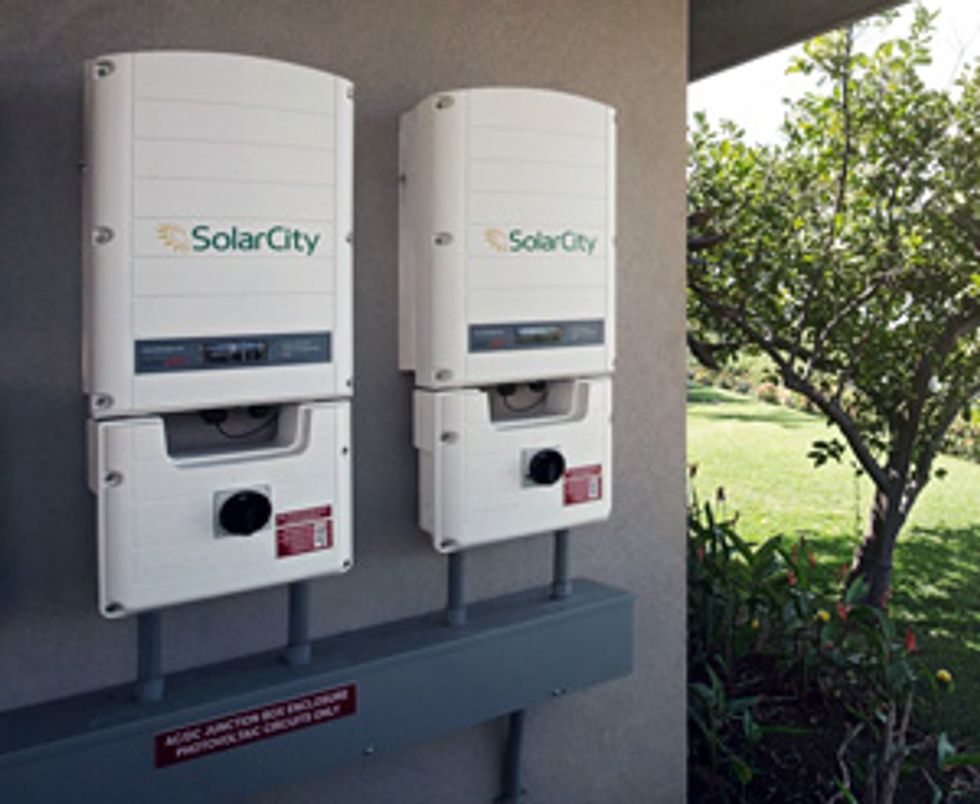
VOC is implemented in the software that controls each inverter. When VOC-enabled inverters are connected to the grid, the grid itself acts like that board hung from springs, coupling the springlike inverters together. Setting up hundreds or thousands of such inverters on the same circuit will cause them to all work together to maintain the system voltage and frequency within an acceptable range.
NREL researchers originally designed VOC to help stabilize relatively small, isolated electricity networks known as microgrids. A microgrid can be connected to the larger utility power grid, or it can disconnect and operate independently. When isolated from the larger grid, the microgrid must generate all of its own electricity. In this scenario it can be challenging to maintain stability because a microgrid, by its very nature, has a much smaller total load. So the sudden addition of a new load, such as when a large central air conditioning unit kicks on, can mean a relatively large jump in the total demand.
To test the VOC approach with a microgrid, NREL researchers used a setup with multiple load types and several types of small test inverters that were about the size that might be installed on a PV panel. The team added the VOC software to each inverter to allow it to constantly evaluate and respond to local conditions on the grid. The VOC inverters were able to act in concert to keep the microgrid stable without needing any deliberate communication among them or a dedicated supervisory control system. The team essentially created a self-regulating microgrid.
This approach provided a much faster response than the existing mechanism, called droop control, for controlling inverters and synchronous machines such as generators. Droop control is based on the idea that the frequency and voltage of a single generator varies, or droops, in proportion to its power output. Droop control is what allows multiple generators to be integrated into a system.
But when droop control is applied to inverter-based systems, it requires a control system that first measures the frequency and voltage and then calculates the appropriate response. These necessary computations result in a sluggish response. VOC, on the other hand, responds immediately to changes in grid conditions, just as a spring responds to any stimuli, with minimal need for measurements or calculations. The inverters don’t even need to explicitly communicate with one another.
NREL is now testing whether the VOC approach could work on utility-scale grids, which connect thousands of homes and businesses. For obvious reasons, we can’t experiment on a real-world grid, so our test will use a large collection of residential-scale inverters and loads connected to a simulated grid. The inverters and loads will interact realistically with this simulated grid, allowing a range of scenarios to determine if the grid voltage and frequency stays within the desired range under normal operating conditions as well as disturbances.
The VOC inverters being used in the NREL tests have been custom-built and programmed, but it should be straightforward to standardize the VOC software so that it can be used in off-the-shelf inverters. In our tests, we’ve also shown that VOC inverters are compatible with the droop control methods currently used in large power grids.
Further into the future, when the world’s power grids move away from synchronous, rotating machinery and toward distributed generation controlled by power electronics, VOC may prove one of the best ways to maintain a stable grid. That transition is beginning to look inevitable, and now is the time to start preparing for it.
This article appears in the November 2016 print issue as “Can Solar Save the Grid?”
About the Author
Benjamin Kroposki, an IEEE Fellow, is director of the Power Systems Engineering Center at the National Renewable Energy Laboratory, in Golden, Colo.

